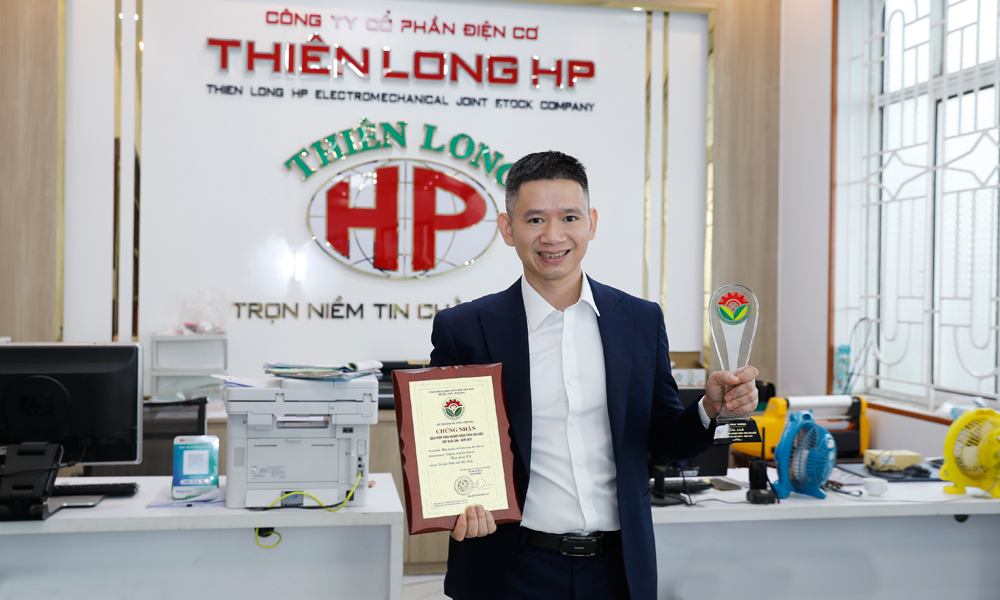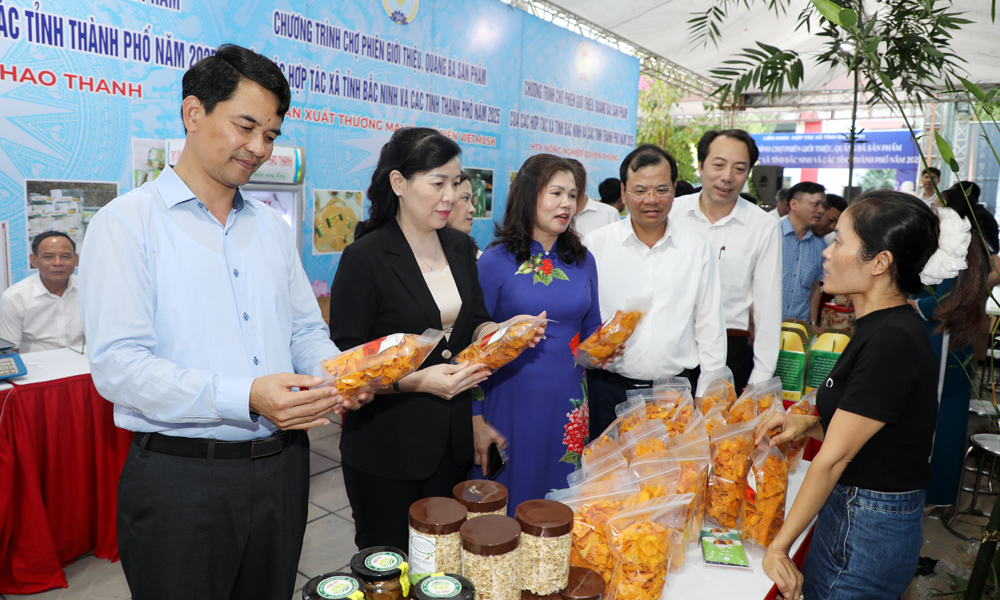Citrus capital gears up for new season
BAC NINH - Phuong Son, Nam Duong, Kien Lao, Tan Son and Chu wards are known as the citrus-growing heartlands of the province, with vast orchards stretching across the hillsides. From October onwards, farmers in these areas are busy caring and harvesting heavy clusters of oranges and grapefruits.
Hopes for a bumper crop
After days of heavy rain from Typhoon No. 11, the soil remains damp and trees somewhat stressed, but across the hills, farmers persist with pruning and fertilizing, hoping for a high-yield season.
 |
|
The sweet orange orchard in Cong village of Kien Lao commune. |
In Hai Cu residential group, Phuong Son ward, rows of lush green trees line the slopes. In her orchard, farmer Leo Thi Thai carefully prunes branches to let sunlight reach her sweet tangerines and pink grapefruits.
Similar scenes unfold in Luc Ngan, Nam Duong, and Kien Lao, where orchard owners quickly resumed work after the floods receded, washing leaves, applying organic fertilizer, and spraying antifungal solutions.
“Healthy trees yield beautiful fruit with juicy segments. We now balance our fertilizer use and reduce nitrogen to maintain the fruit’s natural sweetness,” said Nguyen Thi Hang, who manages a three-hectare grapefruit orchard.
According to the provincial Plant Production and Protection Division, the province currently has nearly 8,200 hectares of citrus, including 2,700 hectares of oranges and 5,400 hectares of grapefruit.
Of this, more than 5,300 hectares meet VietGAP standards, and some farms are shifting toward organic production. The citrus trees are now in their fruiting stage, with total output estimated at 76,000 tonnes. Harvest season is expected to peak from late October and last until February next year.
Despite a slight decline in area due to crop restructuring and storm impacts, yields remain promising thanks to advances in bio-farming, drip irrigation and organic cultivation.
From farming to agricultural business
After the storms, farmers inspected and restored their citrus orchards. Dang Van Tang, head of the Plant Production and Protection Division, said this period is critical for fruit quality.
| The province currently has nearly 8,200 hectares of citrus, including 2,700 hectares of oranges and 5,400 hectares of grapefruit. Of this, more than 5,300 hectares meet VietGAP standards, and some farms are shifting toward organic production. The citrus trees are now in their fruiting stage, with total output estimated at 76,000 tonnes. Harvest season is expected to peak from late October and last until February next year |
“Proper drainage, field hygiene and balanced NPK fertilization are essential. We’ve guided farmers to apply micronutrient foliar fertilizers containing iron, boron, calcium, and zinc to enhance disease resistance, improve shine and flavor, and prevent fruit cracking,” he explained.
Beyond technical care, the spirit of “preserving the brand through quality” has taken root among local growers.
Nguyen Van Hai, a farmer from Chu ward, said, “My grapefruit trees are bearing heavily this year, but I only keep about 70% of the clusters to ensure uniform size and quality. By using composted manure and applying potassium at the right time, the fruits are firm, with golden pulp and a balanced sweetness. Even though we’re two months away from harvest, traders from other provinces have already placed orders at 35,000–40,000 VND per kilo—higher than last year.”
One key reason why citrus fruits from this region consistently sell well is that farmers have combined production with experiential tourism.
Visitors can tour the orchards, taste fresh fruit, and take part in harvesting activities—a model that not only attracts tourists but also boosts product visibility and sales. While some localities struggle to sell their produce, these citrus-growing regions remain leaders in market access and distribution.
Nguyen Van Huu, director of Thanh Hai Agricultural Production and Tourism Cooperative, said: “Growing oranges and grapefruits isn’t just about income—it’s about preserving our heritage and the reputation of this land. Each fruit represents months of hard work and our trust that consumers will recognize its quality.”
This year, Huu’s cooperative plans to expand eco-tourism facilities, offering open spaces for visitors to tour, take photos, and enjoy refreshments at the Hoa Qua Son eco-tourism site.
In the former Luc Ngan district area, nearly 30 community tourism cooperatives now operate, organizing fruit-picking tours combined with cultural visits to temples and scenic boat rides on Cam Son and Khuon Than lakes. Thousands of visitors have come and promised to return during peak harvest months.
Pham Van Du, Chairman of Phuong Son ward, said that before the main harvest in December, the ward plans to organize or partner with neighboring localities to host a fair promoting local specialties. It also aims to attract domestic and foreign businesses to invest in deep-processing facilities for citrus products.
The stories of farmers like Huu and the initiatives of local authorities reflect a clear transition—from pure agricultural production to a model of agricultural economy that connects growers, enterprises and the government.
This shift not only enhances the reach and reputation of local citrus brands but also ensures stable and sustainable incomes for rural communities.
 Bắc Ninh
Bắc Ninh
















Reader's comments (0)